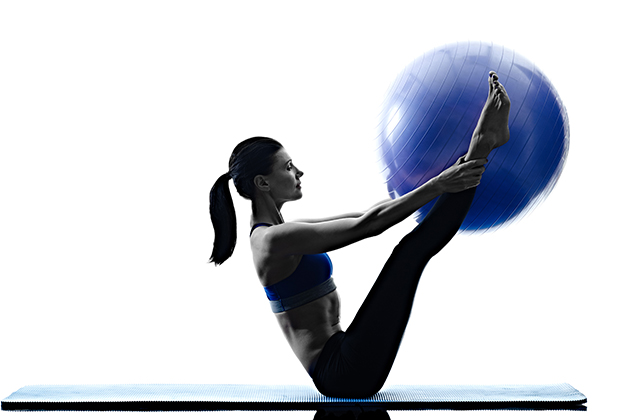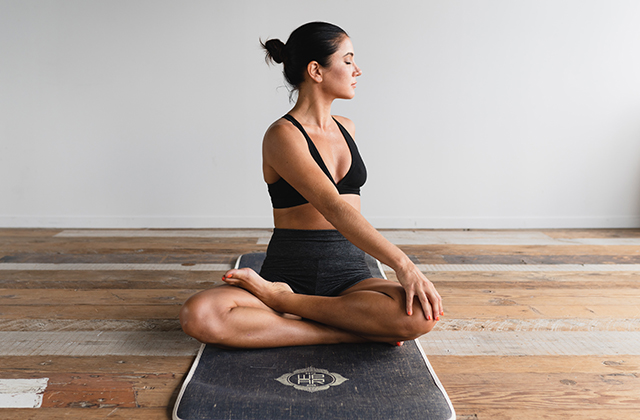Are you looking for a workout routine that not only strengthens your body but also calms your mind and promotes overall well-being? Look no further than Pilates! Pilates is a unique form of exercise that focuses on mindful movement, emphasizing precision, control, and breath. In this article, we will explore the power of Pilates and how it can elevate your fitness routine to new heights.
Introduction to Pilates
Pilates is a form of exercise that was developed by Joseph Pilates in the early 20th century. Originally called “Contrology,” Pilates is a mind-body workout that focuses on strengthening the core muscles, improving flexibility, and enhancing body awareness. It involves a series of controlled movements that are performed on a mat or with specialized equipment such as the Pilates reformer, Cadillac, and chair.
History of Pilates
Joseph Pilates, a German-born fitness enthusiast, created Pilates as a way to rehabilitate injured soldiers during World War I. He believed that physical and mental health are closely interconnected and that proper alignment, breathing, and concentration are essential for optimal well-being. Over the years, Pilates teacher training Sydney gained popularity among dancers, athletes, and individuals seeking a safe and effective way to improve their physical fitness.
Principles of Pilates
Pilates is based on six core principles that guide the practice and ensure its effectiveness. These principles are:
- Concentration: Pilates requires focus and concentration to perform the exercises with precision and control.
- Control: Pilates emphasizes the importance of controlling every movement, avoiding any abrupt or jerky motions.
- Centering: Pilates places a strong emphasis on the core muscles, also known as the powerhouse, which includes the muscles of the abdomen, back, hips, and buttocks.
- Breath: Proper breathing is an integral part of Pilates, as it helps to oxygenate the muscles and promote relaxation.
- Precision: Pilates emphasizes the precision of movement, with each exercise performed with accuracy and attention to detail.
- Flow: Pilates encourages smooth and flowing movements, creating a sense of fluidity and grace in the practice.
Benefits of Pilates for Fitness
Pilates offers a wide range of benefits for physical fitness. Some of the key benefits of Pilates include:
- Improved core strength: Pilates focuses on strengthening the core muscles, which helps to improve posture, balance, and stability.
- Increased flexibility: Pilates exercises promote flexibility in the muscles and joints, which can enhance overall mobility and reduce the risk of injuries.
- Better body awareness: Pilates emphasizes body awareness, helping individuals to develop a better understanding of their body’s alignment and movement patterns.
- Enhanced muscle tone: Pilates involves resistance training, which helps to tone and sculpt the muscles, giving the body a lean and toned appearance.
- Improved posture: Pilates emphasizes proper alignment and posture, helping to correct postural imbalances and reduce back pain.
- Increased energy and vitality: Pilates exercises require concentration and controlled movements, which can help to reduce.
Mindful Movement in Pilates
One of the unique aspects of Pilates is its focus on mindful movement. Unlike other forms of exercise that may prioritize fast-paced, repetitive movements, Pilates encourages practitioners to slow down, be present, and pay attention to every movement they make. This mindfulness not only enhances the physical benefits of Pilates but also promotes mental well-being.
Mindful movement in Pilates involves being fully present in the moment, paying attention to your body, breath, and sensations. It requires concentration and control, as you move through each exercise with precision and awareness. By practicing mindful movement in Pilates, you can improve your mind-body connection, increase body awareness, and cultivate a sense of mindfulness and relaxation.
Incorporating Pilates into Your Fitness Routine
Whether you are new to Pilates or have been practicing it for a while, incorporating it into your fitness routine can bring a new level of challenge and effectiveness to your workouts. Here are some tips on how you can integrate Pilates into your fitness routine:
- Start with the basics: If you are new to Pilates, it’s important to start with the basic exercises and gradually progress to more advanced movements. Focus on mastering the foundational exercises, understanding the principles of Pilates, and building core strength and stability.
- Combine with other exercises: Pilates can complement other forms of exercise such as cardio, strength training, and yoga. You can incorporate Pilates exercises as a warm-up or cool-down, or even during your workout to add variety and challenge.
- Create a routine: Set aside dedicated time for Pilates in your fitness routine. Aim to practice Pilates at least 2-3 times a week to see the maximum benefits. Consistency is key to progress and improvement in Pilates.
- Listen to your body: Pay attention to your body’s signals and adjust the exercises according to your fitness level and limitations. Avoid pushing yourself too hard or compromising your form to prevent injuries.
- Seek guidance from a qualified instructor: If you are new to Pilates, it’s recommended to seek guidance from a qualified Pilates instructor to learn the correct form, alignment, and breathing techniques. An instructor can also provide modifications and progressions based on your individual needs and goals.
Pilates Equipment and Exercises
Pilates can be practiced on a mat or with specialized equipment that Joseph Pilates designed, such as the reformer, Cadillac, chair, and barrels. These equipment offer additional resistance, support, and challenge to the exercises, making Pilates more versatile and adaptable to different fitness levels and goals.
Some of the commonly used Pilates exercises include:
- The Hundred: A classic Pilates exercise that involves lying on your back, lifting your head, neck, and shoulders off the mat, and pumping your arms while maintaining a stable core.
- The Roll Up: This exercise focuses on spinal articulation and abdominal strength. It involves lying on your back, reaching your arms overhead, and rolling up to a seated position, then rolling back down with control.
- The Swan: This exercise targets the back extensors, glutes, and shoulders. It involves lying on your stomach, placing your hands under your shoulders, and lifting your chest and upper body while keeping your pelvis grounded.
- The Teaser: A challenging exercise that requires core strength, balance, and control. It involves lying on your back, lifting your legs and arms off the mat, and rolling up to a seated position while maintaining balance.
- The Side Plank: A variation of the traditional plank, the side plank targets the obliques, shoulders, and hips. It involves balancing on one forearm and the side of the foot while keeping the body in a straight line.
Pilates Benefits for Your Fitness Routine
Incorporating Pilates into your fitness routine can bring about a myriad of benefits. Here are some of the ways Pilates can elevate your fitness routine:
- Improved core strength: Pilates exercises are designed to target the deep muscles of the core, including the abdominal muscles, back muscles, and pelvic floor muscles. Regular practice of Pilates can lead to improved core strength, stability, and posture, which are essential for overall functional fitness.
- Increased flexibility: Pilates exercises emphasize elongation and stretching of the muscles, which can improve flexibility and range of motion. This can be particularly beneficial for individuals who have tight muscles or limited mobility.
- Enhanced muscle tone and definition: Pilates uses resistance and controlled movements to target specific muscle groups, leading to improved muscle tone and definition. It can help you sculpt long, lean muscles without bulk, giving you a toned and balanced physique.
- Better posture and alignment: Pilates emphasizes proper alignment of the spine and pelvis, which can help improve posture and reduce the risk of postural imbalances and related issues such as back pain. Pilates can also help develop the muscles needed to support a healthy posture.
- Increased body awareness: Mindful movement in Pilates requires paying attention to your body and how it moves. This increased body awareness can carry over to other areas of your life, helping you move more mindfully in your daily activities and reducing the risk of injury.
- Reduced stress and improved mental well-being: The focus on mindful movement, breath control, and relaxation in Pilates can help reduce stress, promote relaxation, and improve mental well-being. It can also enhance concentration and focus, helping you achieve a state of mindfulness during your workouts.
FAQs (Frequently Asked Questions)
- Is Pilates suitable for beginners?
Yes, Pilates can be adapted to different fitness levels, including beginners. It’s important to start with the basic exercises and gradually progress as you gain strength and flexibility. Working with a qualified instructor can also ensure that you are using the correct form and alignment.
- How often should I practice Pilates?
It’s recommended to practice Pilates at least 2-3 times a week to see optimal benefits. Consistency is key in Pilates, and regular practice can help you progress and improve your fitness level.
- Do I need any special equipment for Pilates?
While Pilates can be practiced on a mat, specialized equipment such as a reformer, Cadillac, chair, or barrels can add variety and challenge to your workouts. However, many Pilates exercises can also be modified to be done without equipment, making it accessible for those who do not have access to Pilates equipment.
- Can Pilates help with weight loss?
While Pilates is not typically considered a high-intensity cardiovascular exercise, it can still contribute to weight loss when combined with a healthy diet and overall active lifestyle. Pilates can help increase muscle tone, boost metabolism, and improve body composition, which can aid in weight loss efforts.
- Is Pilates only for women?
No, Pilates is not limited to women. It is a form of exercise that can benefit people of all genders and ages. Pilates can be customized to suit individual fitness levels, goals, and needs, making it inclusive and suitable for anyone looking to improve their fitness and well-being.
Conclusion
In conclusion, Pilates offers a unique approach to fitness with its focus on mindful movement, core strength, flexibility, and mental well-being. By incorporating Pilates into your fitness routine, you can elevate your workouts and experience a range of physical and mental benefits. Whether you are a beginner or an experienced fitness enthusiast, Pilates can be customized to suit your needs and goals.
With regular practice, Pilates can help you improve your core strength, flexibility, muscle tone, posture, and body awareness. It can also reduce stress, promote relaxation, and enhance mental well-being. The mind-body connection in Pilates makes it a holistic form of exercise that not only improves your physical fitness but also promotes mental clarity and mindfulness.
So, if you’re looking to elevate your fitness routine and improve your overall well-being, consider adding Pilates to your workout regimen. Whether you choose to practice Pilates on a mat or with specialized equipment, working with a qualified instructor can ensure that you are using the correct form and alignment for maximum benefits.
So, why wait? Start incorporating Pilates into your fitness routine and experience the transformative power of mindful movement today! Go here to transform your body into healthier appearance.



